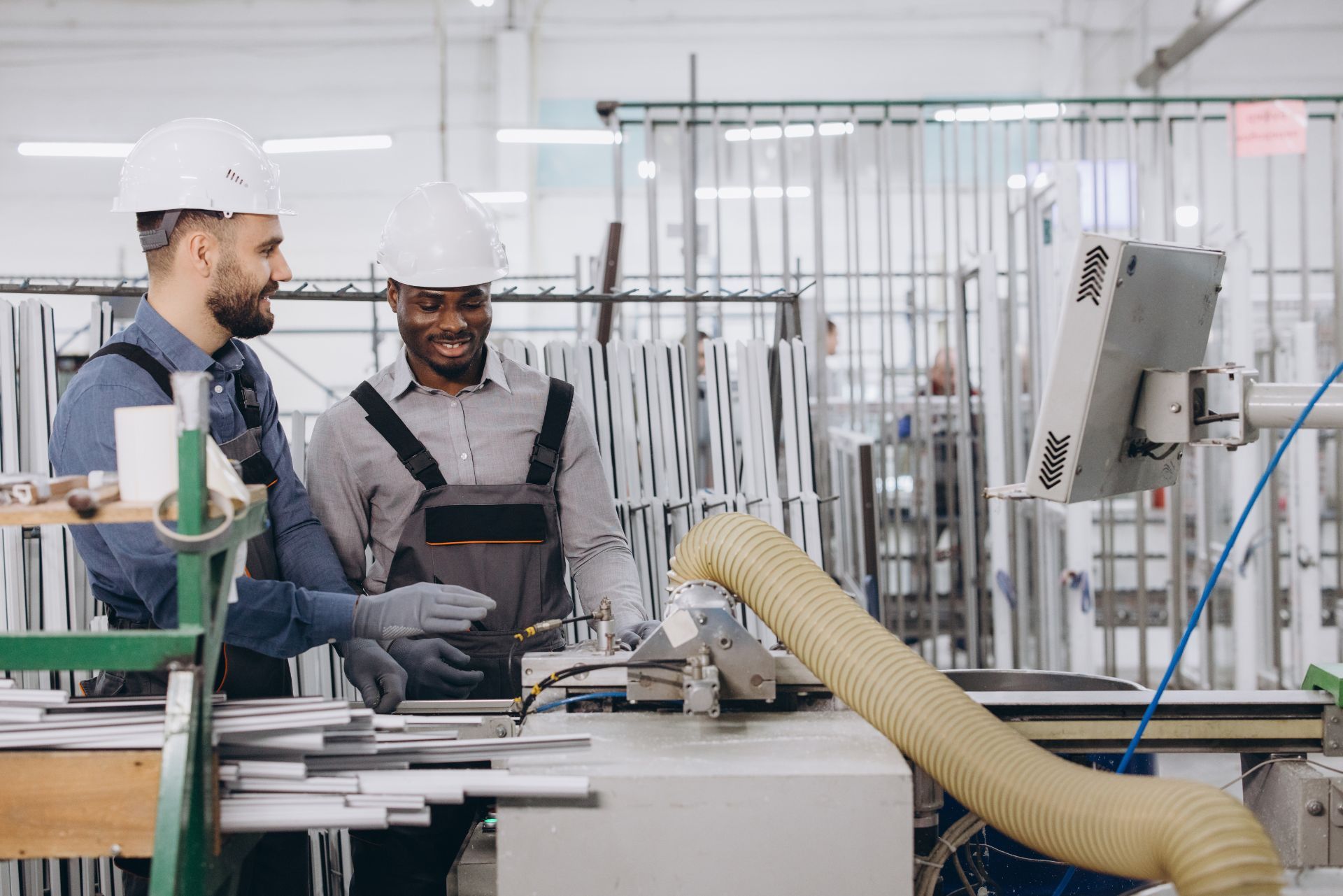Top 3 Recommended Policies

Manufacturing is a cornerstone of Pennsylvania's economy, contributing significantly to job creation and innovation. However, with the rewards of manufacturing come inherent risks, making it essential for manufacturers to secure appropriate insurance coverage. This article delves into the various aspects of Pennsylvania manufacturer insurance, ensuring that manufacturers understand their options and responsibilities.
Understanding Manufacturer Insurance
Manufacturer insurance is a specialized type of coverage designed to protect manufacturing businesses from various risks associated with production, equipment, and liability. This insurance can encompass a wide range of policies tailored to meet the unique needs of manufacturers in Pennsylvania. Given the complexities of the manufacturing process, it is vital for businesses to have a comprehensive understanding of the insurance landscape to ensure they are adequately protected against potential losses.
Types of Coverage
Manufacturers typically require multiple types of insurance coverage to safeguard their operations. Some of the most common types include:
- General Liability Insurance: This policy protects against claims of bodily injury, property damage, and personal injury that may arise during business operations.
- Property Insurance: This covers damage to buildings, machinery, and inventory due to events like fire, theft, or natural disasters.
- Workers' Compensation Insurance: Essential for any employer, this insurance provides benefits to employees who suffer work-related injuries or illnesses.
Why Manufacturer Insurance is Essential
Having the right insurance coverage is crucial for manufacturers for several reasons:
- Risk Management: Manufacturing involves numerous risks, from machinery malfunctions to employee injuries. Insurance helps mitigate these risks.
- Legal Protection: In the event of a lawsuit, having adequate insurance can protect a manufacturer’s assets and ensure legal fees are covered.
- Business Continuity: Insurance can help a manufacturer recover from unexpected events, ensuring they can continue operations with minimal disruption.
Moreover, manufacturers should also consider additional coverages such as product liability insurance, which protects against claims arising from defects in products sold. This is particularly important in industries where safety is paramount, as a single claim can lead to significant financial repercussions and damage to a company’s reputation. Additionally, environmental liability insurance is becoming increasingly relevant, as manufacturers face scrutiny over their environmental impact and the potential costs associated with pollution or waste management.
In the ever-evolving landscape of manufacturing, staying informed about the latest insurance products and regulations is essential. Engaging with an insurance broker who specializes in manufacturing can provide valuable insights into the most suitable policies for specific operations. This proactive approach not only helps in identifying potential coverage gaps but also ensures that manufacturers are prepared to adapt to changes in the industry, such as advancements in technology or shifts in regulatory requirements.

Key Considerations When Choosing Insurance
Selecting the right insurance policy requires careful consideration of various factors that can impact coverage needs and costs.
Assessing Business Risks
Each manufacturing business has unique risks based on its operations, products, and workforce. Conducting a thorough risk assessment can help identify potential liabilities and coverage needs. This assessment should include:
- Analysis of the manufacturing process and equipment used.
- Evaluation of the workforce and safety protocols in place.
- Consideration of the types of products manufactured and their associated risks.
Additionally, businesses should consider external factors that may influence their risk profile, such as market fluctuations, regulatory changes, and environmental impacts. For instance, a manufacturing facility located in an area prone to natural disasters may need to account for specific coverage related to flood or earthquake damage. Understanding these nuances can lead to a more comprehensive insurance strategy that not only protects the business but also supports its long-term growth and sustainability.
Understanding Policy Limits and Deductibles
When reviewing insurance policies, it's important to understand the limits of coverage and the deductibles involved. Policy limits refer to the maximum amount an insurer will pay for a covered claim, while deductibles are the amounts that policyholders must pay out of pocket before insurance coverage kicks in. Balancing these factors can help manufacturers find a policy that meets their budget while providing adequate protection.
Moreover, it is essential to regularly review and adjust these limits as the business evolves. For example, if a manufacturer expands its operations or introduces new product lines, the initial policy limits may no longer be sufficient. Regular discussions with insurance providers can ensure that coverage remains aligned with the current state of the business, thus minimizing the risk of being underinsured during critical times.
Working with Insurance Professionals
Engaging with an insurance agent or broker who specializes in manufacturing insurance can be invaluable. These professionals can provide insights into the specific risks faced by manufacturers in Pennsylvania and recommend tailored coverage options. They can also assist in navigating the complexities of policy terms and conditions.
In addition to finding the right policy, insurance professionals can offer ongoing support, including risk management strategies and claims assistance. They can help manufacturers understand the claims process, ensuring that any incidents are handled efficiently and effectively. This proactive approach not only helps in mitigating losses but also fosters a stronger relationship between the insurer and the insured, ultimately leading to better service and support in times of need.
Common Risks Faced by Manufacturers in Pennsylvania
Manufacturers in Pennsylvania encounter a variety of risks that can impact their operations. Understanding these risks is essential for selecting appropriate insurance coverage.
Equipment Breakdown
Manufacturing relies heavily on machinery and equipment, which can be prone to breakdowns. Equipment failure can lead to costly downtime and lost production. Insurance policies that cover equipment breakdown can help mitigate these risks by covering repair or replacement costs. Regular maintenance and inspections are also critical in preventing unexpected failures, as they can identify potential issues before they escalate into significant problems. Manufacturers may also consider investing in advanced monitoring technologies that provide real-time data on equipment performance, allowing for proactive maintenance and minimizing the risk of breakdowns.
Product Liability
Manufacturers are responsible for ensuring that their products are safe and free from defects. If a product causes harm or injury, the manufacturer may face legal claims. Product liability insurance is crucial for protecting against these potential lawsuits, covering legal fees and damages awarded to affected parties. Additionally, implementing rigorous quality control processes can help manufacturers ensure compliance with safety standards and reduce the likelihood of defects. Engaging in thorough testing and obtaining certifications can also bolster a manufacturer's reputation and provide added assurance to consumers regarding the safety of their products.
Workplace Safety and Employee Injuries
Ensuring a safe working environment is paramount in manufacturing. However, accidents can still occur, leading to employee injuries.
Workers' compensation insurance is a legal requirement in Pennsylvania and provides benefits to employees injured on the job, covering medical expenses and lost wages. Beyond insurance, fostering a culture of safety through regular training programs and safety drills can significantly reduce the incidence of workplace accidents. Manufacturers should also consider conducting risk assessments to identify potential hazards and implement corrective measures, such as ergonomic improvements or enhanced safety equipment, to protect their workforce and maintain productivity.
Regulatory Compliance in Pennsylvania
Manufacturers in Pennsylvania must adhere to various regulations that govern safety, environmental standards, and labor practices. Understanding these regulations is vital for compliance and risk management. The landscape of regulatory compliance is continually evolving, requiring manufacturers to stay informed about changes that may impact their operations. This proactive approach not only safeguards the company from potential penalties but also enhances its reputation in the marketplace.
Occupational Safety and Health Administration (OSHA) Standards
OSHA sets forth regulations to ensure workplace safety across all industries, including manufacturing. Compliance with OSHA standards is not only a legal requirement but also helps minimize workplace accidents and injuries. Manufacturers should regularly review OSHA guidelines and implement necessary safety measures. Training programs for employees on safety protocols and emergency procedures can significantly reduce the likelihood of accidents. Additionally, fostering a culture of safety within the organization encourages employees to prioritize their well-being and that of their colleagues.
Environmental Regulations
Manufacturers must also comply with environmental regulations that govern waste disposal, emissions, and resource usage. The Pennsylvania Department of Environmental Protection (DEP) oversees these regulations, and non-compliance can result in hefty fines and legal repercussions. Insurance policies that cover environmental liabilities can provide additional protection against these risks. Furthermore, adopting sustainable practices not only helps in compliance but can also lead to cost savings in the long run. Implementing recycling programs, reducing energy consumption, and utilizing eco-friendly materials can enhance a manufacturer's standing with consumers who increasingly value corporate responsibility.
Labor Laws and Employment Practices
Understanding labor laws is essential for manufacturers to avoid potential legal issues. This includes compliance with wage and hour laws, anti-discrimination policies, and workplace safety regulations. Employment practices liability insurance can help protect manufacturers against claims related to wrongful termination, harassment, or discrimination. Moreover, establishing clear communication channels and grievance procedures can empower employees to voice their concerns, fostering a more engaged and satisfied workforce. Regular audits of employment practices and policies can also help identify areas for improvement, ensuring that the company remains compliant and competitive in a dynamic labor market.

Cost Factors Influencing Manufacturer Insurance Premiums
The cost of manufacturer insurance can vary significantly based on several factors. Understanding these factors can help manufacturers budget effectively for their insurance needs.
Type of Manufacturing Operations
The nature of the manufacturing operations plays a significant role in determining insurance premiums. High-risk industries, such as those involving heavy machinery or hazardous materials, may incur higher premiums compared to lower-risk operations. For instance, manufacturers in the automotive or aerospace sectors often face stringent safety regulations and potential liabilities, which can drive up their insurance costs. On the other hand, businesses engaged in less hazardous activities, such as textiles or food processing, might benefit from lower premiums due to their inherently lower risk profiles.
Claims History
A manufacturer’s claims history can also impact insurance costs. A history of frequent claims may signal higher risk to insurers, resulting in increased premiums. Conversely, a clean claims history can lead to lower rates. Insurers often evaluate the types of claims made, as well; for example, claims related to employee injuries or product defects can be particularly concerning. Manufacturers that invest in safety training and quality control measures may not only reduce the likelihood of claims but also demonstrate to insurers that they are proactive about risk management, potentially leading to premium discounts.
Location and Facility Size
The location of the manufacturing facility and its size can influence insurance costs. Areas prone to natural disasters or high crime rates may result in higher premiums. Additionally, larger facilities with more employees and equipment may require more extensive coverage, impacting overall costs. Furthermore, local regulations and building codes can also play a role; manufacturers operating in regions with stringent safety and environmental regulations may face higher premiums due to the increased liability associated with compliance. Manufacturers in urban areas might also contend with higher property values and associated risks, further complicating their insurance landscape.
Workforce and Employee Training
The workforce's skill level and the quality of employee training can significantly affect insurance premiums as well. Companies that prioritize employee training in safety protocols and operational procedures often see a reduction in workplace accidents, which can lead to fewer claims and lower insurance costs. Insurers may offer incentives or discounts for manufacturers that implement comprehensive training programs, as these initiatives demonstrate a commitment to maintaining a safe working environment. Additionally, the ratio of skilled workers to unskilled workers can also influence premiums; a highly skilled workforce is typically associated with lower risk, as experienced employees are less likely to make costly mistakes.
Industry Trends and Market Conditions
Lastly, prevailing industry trends and market conditions can also sway insurance premiums. For instance, during economic downturns, insurers may adjust their pricing models to account for increased risk associated with financial instability. Conversely, in a booming market, manufacturers might find themselves facing higher premiums due to increased demand for coverage and a rise in claims. Staying informed about industry trends, such as advancements in technology or shifts in regulatory frameworks, can help manufacturers anticipate changes in their insurance costs and adapt their strategies accordingly.
Finding the Right Insurance Provider
Choosing the right insurance provider is crucial for ensuring that a manufacturer receives the necessary coverage and support. Here are some tips for finding a suitable provider.
Research and Compare Providers
Conducting thorough research on various insurance providers is essential. Look for companies that specialize in manufacturing insurance and have a strong reputation in the industry. Comparing quotes and coverage options can help identify the best fit for specific needs.
Check Financial Stability
Before selecting an insurance provider, it’s important to assess their financial stability. A financially sound insurer is more likely to fulfill claims and provide reliable support. Rating agencies such as A.M. Best can provide insights into an insurer's financial health.
Read Customer Reviews and Testimonials
Customer feedback can provide valuable insights into an insurer's service quality and claims handling process. Reading reviews and testimonials can help manufacturers gauge the experiences of others and make informed decisions.
Tips for Managing Insurance Costs
Implementing Safety Programs
Investing in workplace safety programs can significantly reduce the likelihood of accidents and injuries. By creating a safer work environment, manufacturers can lower their workers' compensation premiums and improve overall risk profiles.
Regularly Review Coverage Needs
As manufacturing operations evolve, so do insurance needs. Regularly reviewing coverage can help ensure that policies remain aligned with current risks and operations. This proactive approach can also identify opportunities for cost savings.
Bundle Policies for Discounts
Many insurance providers offer discounts for bundling multiple policies. By consolidating coverage under one insurer, manufacturers can save on premiums while simplifying their insurance management.
Conclusion
In conclusion, Pennsylvania manufacturer insurance is a vital component of risk management for manufacturing businesses. Understanding the various types of coverage, assessing risks, and selecting the right provider are essential steps in securing adequate protection. By being proactive in managing insurance needs and costs, manufacturers can safeguard their operations and focus on growth and innovation.
With the right insurance in place, manufacturers can navigate the complexities of their industry with confidence, ensuring that they are prepared for whatever challenges may arise.
Contact Us

